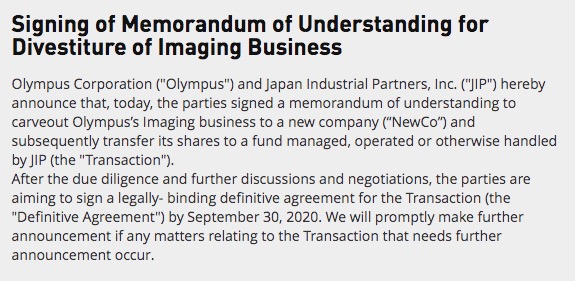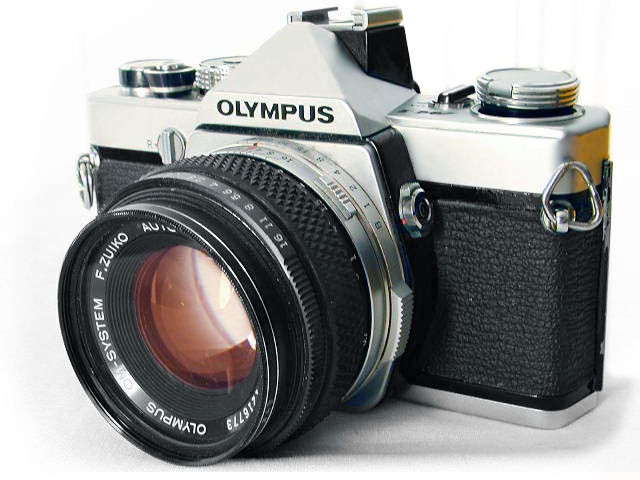Camera business sold.

The announcement.
The buyer is the same that bought Sony’s Vaio laptop business a few years ago. Ever seen one since? No, I thought not. And that will likely be the fate of Olympus cameras, too.
What is surprising is that this took a full decade after Olympus perpetrated one of the largest accounting frauds in history, hiding $1.5 billion in investment losses. Japan Inc. covered for that but could not cover for a failing sector – the stand alone camera business.
Over the years Oly has made some excellent innovative cameras, including the half-frame Pen F with the side flapping mirror and the compact OM1 in the film era.

The excellent OM1 – small, quiet and with a great selection of lenses.
But the failure of Olympus is not the result of accounting fraud. It’s the same cause that will see Pentax, Ricoh, Sigma, Panasonic and probably Nikon exit the camera business in the next few years, once corporate pride and loss of face are dealt with. The reason is a catastrophic failure to innovate. The high prices of even entry level DSLRs or mirrorless cameras, typically north of $600, puts them in square competition with the iPhone and its outstanding camera. The computational photography aspects of the cell phone’s camera moxy include variable depth of field, exceptional night imaging and the ability to instantly share images with the world. No traditional camera body, be it FF, APS-C or MFT can offer those features. And Apple is just getting started with its in-house designed Axx series of CPUs, now migrating to their laptops and desktops. And Apple’s in-house designs make it very much harder for the serial thieves at Samsung to keep up, fair reward for their crimes.
The other survivors? Canon, for whom cameras are a small revenue center and Leica, which changed its business model years ago. They now no longer make cameras, focusing on jewelry.
So goodbye, Olympus, and hullo, iPhone. It’s time to move on.